Menaces or misunderstood? Everything you need to know about seagulls
This article contains affiliate links. We may earn a small commission on items purchased through this article, but that does not affect our editorial judgement.
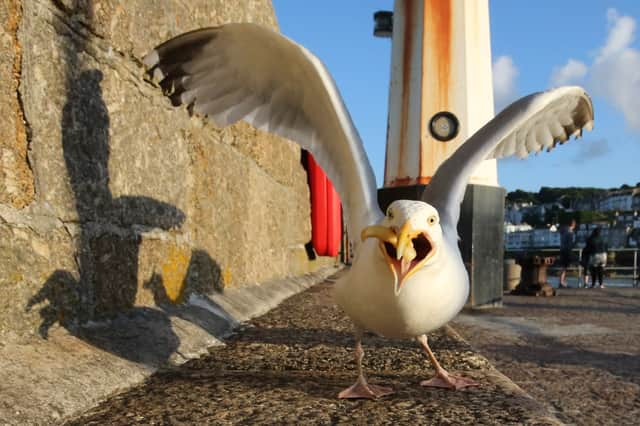

Seagulls, the tormentors of the nation.
Love them or loathe them, we have to live beside them - even with their rubbish-bin-raiding and food-stealing antics.
Despite their notoriety, most of us don’t actually know all that much about scurries, and their behaviour often raises questions from if they're protected to how to deter them.
Advertisement
Hide AdAdvertisement
Hide AdHere, we endeavour to answer your burning seagull questions – including if you can eat them.
But first…
There is no such thing as a seagull
Before we begin, we must acknowledge that there is no such thing as a “seagull”.
In fact, the UK is home to a variety of different gull species.


What types of seagulls live in the UK?
The “seagulls” most commonly seen in the UK include herring gulls, lesser-black backed gulls, great black-backed gulls and, aptly, the common gull.
The largest species of gull is the great black-backed gull which has a wingspan up to 160cm, or 5ft 2in – just shy of the average height of UK women.
However, the stereotypical seagull we tend to think of is the herring gull.
Large and loud, the herring gull’s wingspan is typically between 130-150 cm and these birds can be found across the UK – from the coast to rubbish tips.
How long do seagulls live?
Of the most common species in the UK, gulls typically have a lifespan of between 10 and 15 years.
Advertisement
Hide AdAdvertisement
Hide AdThe common gull has an average lifespan of 10 years, the herring gull sits at around 12 years, the great black-backed gull of 14 years and the lesser black-backed gull sits at an average of 15 years.
In comparison, a pigeon in the wild has a lifespan of just 6 years.
Where do seagulls live?
Gulls are seabirds and as such have adapted to live along the coastline.
They have webbed feet to help them manoeuvre through water, though it can limit what they pick up.
However, since the 1940s there are more and more gulls making homes in urban areas.


Why do seagulls come inland?
One reason seagulls move inland is an abundant food supply.
Seagulls are scavengers and rubbish dumps and bins in towns and cities have a ready stock of food for gulls which can encourage them to move inland.
Gulls can often be impacted by industries such as fishing, which can disrupt the availability of meals for the birds.
There are also fewer predators in urban areas, such as building rooftops where seagulls tend to nest.
Advertisement
Hide AdAdvertisement
Hide AdWhat do seagulls eat?
Seagulls are natural scavengers – they are not fussy and their diet is flexible.
Those who live by the coast are adept at hunting food from the surface of the water, but unlike other seabird species, won’t dive beneath the water itself.
Gulls are omnivores who will consume fish, insects, small animals, human leftovers, carrion and more – essentially anything they can consume, they will.
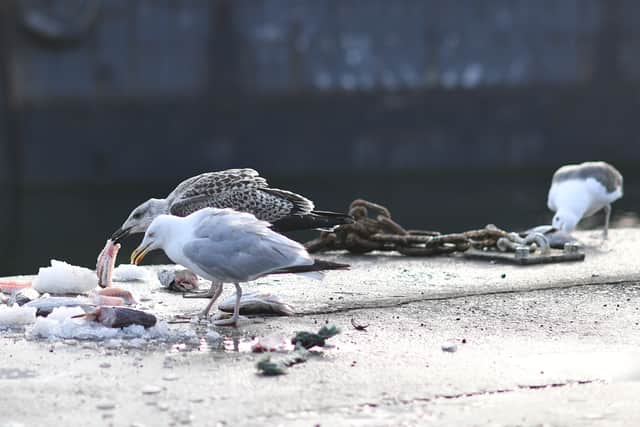

While many people in the UK refer to seagulls as “vermin with wings”, they are extremely adaptable, which is why the bird’s urban population has increased so dramatically.
Gulls have special glands which means they can drink salt water and their large size and strength allow them to carry prey up to around 2kg.
On that note...
Do seagulls eat rats?
Yes, seagulls may eat rats.
Do seagulls eat pigeons?
Yes, seagulls may eat pigeons.
Do seagulls eat small dogs?
This also means that yes, seagulls may attempt to eat small dogs.
Any variety of small mammal – from rabbits to other birds – is on the menu for seagulls.
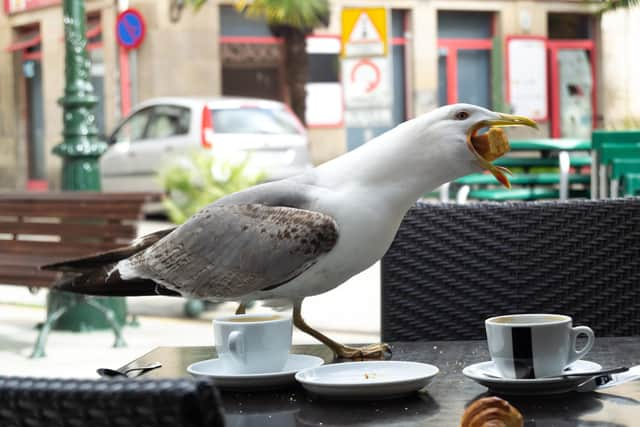

This is because gulls, horrifyingly, have unhinged jaws and flexible throats which allows them to swallow prey whole.
Advertisement
Hide AdAdvertisement
Hide AdSeagulls do not have teeth and they feed 3-6 times per day, consuming approximately 20% of their body weight in food. Without eating, they become weak within 24 hours.
Scurries are also known for attacking humans and stealing food, often straight from our hands, and in some cases their thieving even extends to shoplifting.
But why do seagulls attack humans?
If you have ever been the unwitting victim of a seagull - either stealing your food or attacking you - this is likely a question you've had.
The answers are relatively simple even if the gulls themselves are not.
A 2020 study found that when presented with two identical food items, 79% of gulls would swoop for the food which they had seen in human hands.
It’s a sign of intelligence, with gulls having learned how to imitate human food habits through “interspecies learning”.
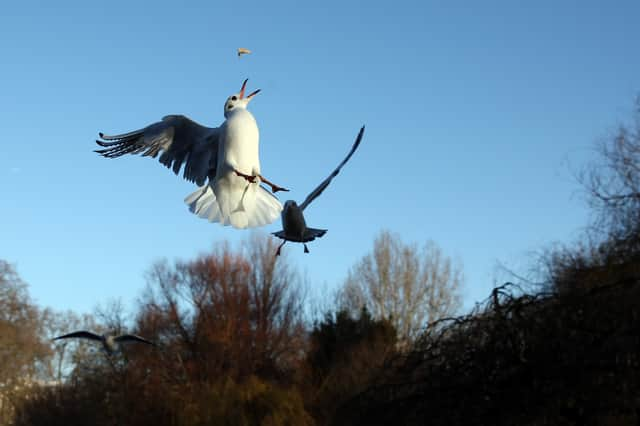

Paul Graham, professor of neuroethology at the University of Sussex, says "gulls have adapted to thrive in urban environments by mimicking human food choices", and their stealing demonstrates how smart they are.
Despite their intelligence, seagulls, unlike humans, can’t actually distinguish between an item of food which is given and something which is just there – which is one reason why seagulls “attack” humans.
Advertisement
Hide AdAdvertisement
Hide AdProtecting their young
Another, and perhaps more alarming, reason why seagulls attack humans is because of how territorial and protective they are.
Birds and animals rely on instinct to survive, and humans often appear as a threat.
If a gull witnesses a human near their nest or their young, even if it’s a chick which has fallen from the nest, they will attack without hesitation.
They will usually stop once the “threat” has moved away from their young, but there are some ways to avoid an attack from happening at all.
How to stop seagulls attacking you
Agitated gulls will make warning calls, to encourage threats to move away. If you stay put, they will begin to swoop.
If this happens and they make contact, raise your arms to protect your head and move away from what the gull is protecting. Don’t wave your arms – this will only further annoy seagulls.
If your proximity to gulls is unavoidable, for example there’s a nest on your roof, hats or umbrellas can work as shields.
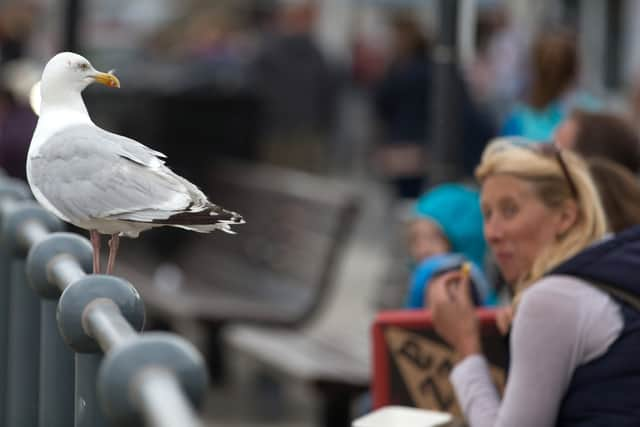

If you’re being swooped on because you have food, there is little you can do but stay vigilant of the birds nearby.
Advertisement
Hide AdAdvertisement
Hide AdIf you're eating and a gull approaches you on foot, make eye contact. Having a staring contest alerts the gull you’ve spotted it and may deter the bird from moving closer.
Other ways to potentially stop attacks include covering your food or moving it closer to you.
Is it illegal to feed seagulls?
It is not illegal to feed seagulls, but it is inadvisable.
They are scavengers, and feeding birds or dropping food – littering – only encourages gulls to stay in close proximity to food sources.
Gulls, particularly in urban areas, can very quickly become nuisances, knocking over bins to pick through rubbish or swooping to steal food.
Seagulls require a diverse diet and consuming too much human food is bad for both us and them. Their observant nature means they can, and will, return to areas which have proven an easy food source in the past.
Feeding seagulls only reinforces behaviours such as food snatching so no, while it isn’t illegal to feed gulls you should avoid doing so.
Why do seagulls stand on one leg?
Many species of bird can be seen resting on one leg. Gulls are no exception, and it’s because bird legs have an adaptation called “rete mirabile”.
Latin for “wonderful net”, is a pattern of arteries which essentially cools down the blood from a bird's heart so that when it reaches the feet it’s already cold, overall reducing heat loss.
Advertisement
Hide AdAdvertisement
Hide AdBy standing on one leg, seagulls half the amount of heat lost by keeping the other leg tucked in their feathers for warmth.
Do seagulls sleep?
Yes, seagulls sleep; but it may not look how you expect.
They can sleep standing up and while sleeping they will often open and close their eyes.
To conserve heat, gulls will tuck their head into their wings or back when sleeping sitting down, or with one leg tucked under them while sleeping standing.


They can also technically sleep with one eye open, like many other birds, an adaptation called “peeking”.
One half a bird’s brain will shut down while the other remains awake, allowing gull’s to conserve energy while maintaining awareness of potential threats.
Where do seagulls sleep?
Gulls will often travel in large groups known as a colony (not a flock, despite the name of Liverpool band A Flock Of Seagulls).
By doing so, they are more effectively able to monitor potential threats particularly when asleep.
Depending on if the gulls are in an urban area or by the sea, they will sleep in groups on beaches, rooftops, trees, boats or even floating on the water.
Advertisement
Hide AdAdvertisement
Hide AdTheir “peeking” behaviour allows them to rest effectively pretty much anywhere, and they don’t necessarily need to be in a colony to do so.
When do seagulls start nesting?
Seagulls begin nesting around early May, and they breed once a year.
Nest sites include sea-cliffs, sand dunes, islands and, for urban gulls, rooftops. They will build their nests with twigs and grasses, with both sexes incubating a clutch of two to four eggs for up to 30 days.
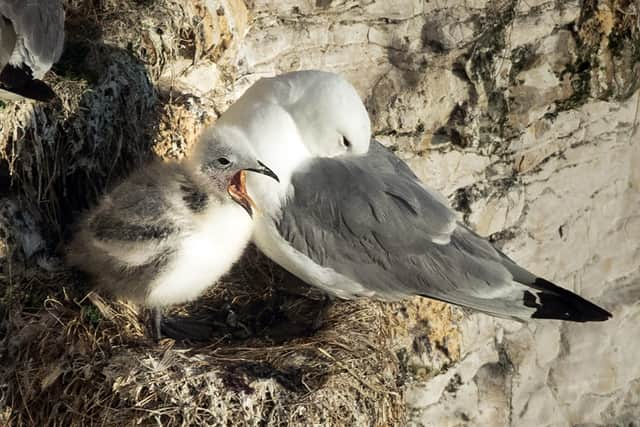

How long do baby seagulls stay with their parents?
Baby gull chicks hatch covered in down, and with the exception of one gull species, will leave the nest to move to a “safe” location at only a few days old.
Their parents will continue to feed them for five to six weeks following this.
Due to their nesting habits, it’s not unusual to see baby seagulls on the ground during this period.
If the baby gull seems uninjured, healthy and alert – steer clear. It is likely still being fed by its parents and intervening could cause a parent to attack you.
Are seagulls protected?
Yes, seagulls are protected.
In Scotland, all wild birds (and their nests) are protected by the Wildlife and Countryside Act 1981, which prevents humans from harming animals.
Advertisement
Hide AdAdvertisement
Hide AdIt is therefore illegal to intentionally kill, take or injure gulls, or to destroy their eggs or nests – without licence. Preventing gulls from accessing their nests is also illegal.
Breaking the law can result in an unlimited fine, up to six months imprisonment or both.
While all species of gull are covered with this law, there is also recognition that control measures may be necessary and in some circumstances a licence can be issued.
This is only ever used as a last resort if non-lethal solutions fail or to preserve public health and safety. Licences can be granted to an authorised person at a local council or individually on a case by case basis.
Being a nuisance does not qualify as a reason to kill gulls.
Are seagulls endangered?
The number of urban gull colonies in the UK has increased dramatically over the last few decades, with research suggesting that three quarters of the species now live in urban areas.
Despite their increasing presence, gull species are at risk.
Seven types of gulls breed in the UK. Of those seven, two are on the UK Red List, which marks species of birds in critical decline, with the rest are amber listed.
Advertisement
Hide AdAdvertisement
Hide Ad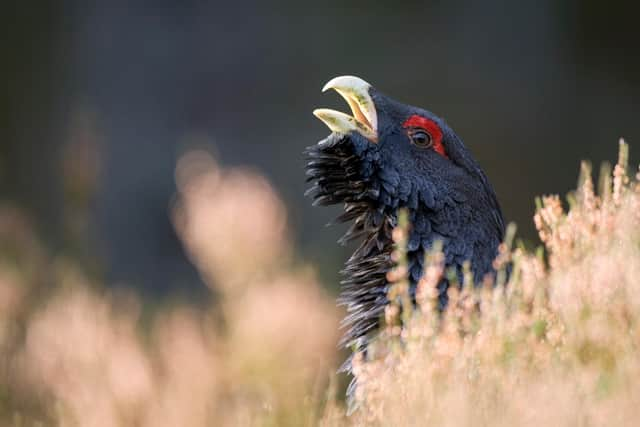

This list includes rare birds such as capercaillies, it also includes more familiar species such as house sparrows and starlings.
The herring gull and kittiwake are both red listed following serious population declines in recent years.
Climate change is playing a significant role in the decline of the gull population – particularly the kittiwake which is facing a shortage of its preferred prey, sandeels.
Can you eat seagulls?
The simplest answer is that yes, you can eat seagulls. Now should you? Most certainly not.
As we covered, gulls are protected by law and the penalties for harming the birds can be steep. Additionally, gulls are scavengers and they eat spoiled meat, meaning there is a high chance they carry diseases and parasites.
Scottish communities such as Shetland, St Kilda and Orkney are known to have consumed all manner of seabirds, but unlike today the diet which would have been available to the birds would have primarily been fish.
To summarise, seagulls are technically safe to eat, but why would you want to?
Do seagulls mate for life?
Gulls are a long lived species and the larger among them don’t begin to breed until they are four-years-old.
Advertisement
Hide AdAdvertisement
Hide AdOnce they find a partner they live monogamously, meaning seagulls mate for life.
If the mated pair cannot produce healthy chicks, they could potentially “divorce”.
Gulls mate from April to September, and their mating behaviour will see the male gull balance on the back of the female in order to transfer sperm through an opening called a cloaca.
Why do seagulls scream?
Since gulls began flying inland and making homes in urban areas, one of the most common complaints about them is how noisy they are.
Their noise, or “screaming”, is used to protect their nests from potential predators, express excitement, call to their young or to attract mates.
However, when you consider how many seagulls congregate in one place, which includes any offspring, the volume can very quickly become frustrating.
Seagulls will make the most noise between May and July, during breeding season.
How to deter seagulls
Perhaps the biggest question for those plagued by nuisance birds: how do you deter seagulls?
Advertisement
Hide AdAdvertisement
Hide AdYou can’t kill them, nor interfere with their nests, so what can be done?
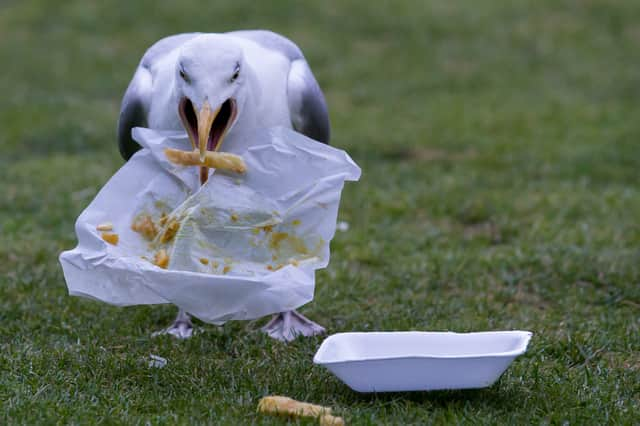

Pick up litter
Littering attracts gulls, who see empty packets or open bins as an easy way to find food.
Avoid littering or ensuring any rubbish is secured in a gull-proof bin can help deter the birds.
Avoid gull chicks and nests
Gulls will attack when they feel threatened, so take care when near a baby gull or any nests.
They will swoop in and attack, so it’s best to keep your distance where possible. If you can’t avoid walking nearby, hats or umbrellas may help.
Use physical deterrents
Though the law states that nests cannot be interfered with, you could take preventative measures to stop gulls from nesting in the first place.
The RSPB recommends wire systems which could sit between chimneys. Other possible solutions include anti-bird spikes, decoy animals, shiny tape and other optical illusions such as “fire gel” (a substance which looks like flames to birds), or even sonic devices.
Comments
Want to join the conversation? Please or to comment on this article.
